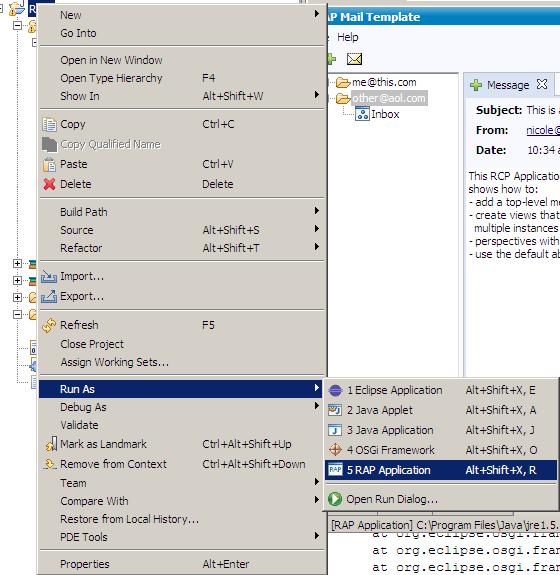RAP is very similar to Eclipse RCP, but instead of being executed on a desktop computer
RAP is run on a server and clients can access the application with standard browsers.
This is mainly achieved by providing a special implementation of SWT (a subset of SWT API).

RAP 開發環境的配置。
1.首先下載 rap-sdk-1.1-M3-site-20080407-1550.zip 和 rap-1.1.0-M3-target-3.3-20080407-1124.zip,以及Eclipse 3.3
2.把rap-sdk-1.1-M3-site-20080407-1550.zip解壓到Eclipse 3.3的eclipse目錄下,把rap-1.1.0-M3-target-3.3-20080407-1124.zip解壓到任何除eclipse目錄以外的地方
3.啟動eclipse,選擇 Window >
Preferences, 選擇 Plug-in Development > Target Platform, Location選擇剛才解壓rap-1.1.0-M3-target-3.3-20080407-1124.zip的目錄,并選擇它的子目錄eclipse,最后點Reload
4.新建Project,New Project (File > New > Project),選擇Plug-in Project,填入項目名稱例如:RapExample, 然后一直點Next,
最后可以選擇RAP 的一些模板

運行選擇:Run as RAP Application
